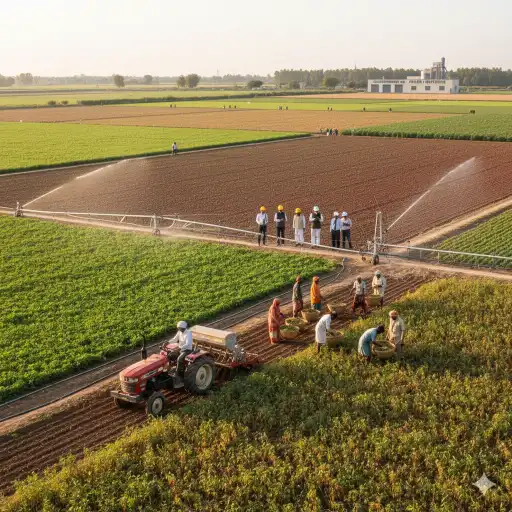The Union Cabinet, chaired by Prime Minister Narendra Modi, has approved the “Mission for Aatmanirbharta in Pulses,” a six-year program running from 2025-26 to 2030-31. With a total outlay of ₹11,440 crore, the mission aims to make India self-reliant in pulses production, following the announcement in the 2025-26 Budget by Finance Minister Nirmala Sitharaman.

Focus on Key Pulses and Assured Procurement
The mission will prioritize production of tur, urad, and masur. Government agencies, including the National Agricultural Cooperative Marketing Federation of India (Nafed) and the National Cooperative Consumers’ Federation of India Ltd (NCCF), will provide assured procurement for registered farmers.
Production and Cultivation Targets
The government aims to raise pulses production to 350 lakh tonnes by 2030-31, up from 242 lakh tonnes in 2023-24. Cultivation area will expand to 310 lakh hectares from 242 lakh hectares, while yields are targeted to increase to 1,130 kg per hectare from 881 kg per hectare.
Cluster-Based Implementation and Infrastructure
The mission will operate in 416 districts using a cluster-based approach. Around 1,000 new processing and packaging units will be established, with a maximum subsidy of ₹25 lakh per unit.
Seed Distribution and Crop Improvement
The program emphasizes high-yield, pest-resistant, and climate-resilient pulse varieties. Multi-location trials will ensure regional suitability. By 2030-31, the government plans to distribute 126 lakh quintals of certified seeds across 370 lakh hectares. States will prepare five-year rolling seed plans, supervised by the Indian Council of Agricultural Research (ICAR), with tracking via the SATHI portal. Additionally, 88 lakh seed kits will be distributed free to promote intercropping and cultivate fallow rice areas.
Price Support and Market Stability
A key feature is assured procurement under the Price Support Scheme (PSS) of PM-AASHA. Nafed and NCCF will ensure 100% procurement in participating states for four years from registered farmers. Mechanisms will also be established to monitor global pulse prices, maintaining stability and farmer confidence.
Benefits for Farmers and the Environment
The mission aims to reduce import dependence, conserve foreign exchange, increase farmers’ incomes, and create employment opportunities. Environmentally, it will support climate-resilient farming, improve soil health, and make productive use of fallow land. Capacity-building programs will train farmers in sustainable techniques and modern technologies, strengthening the entire pulse value chain from cultivation to storage and processing.
